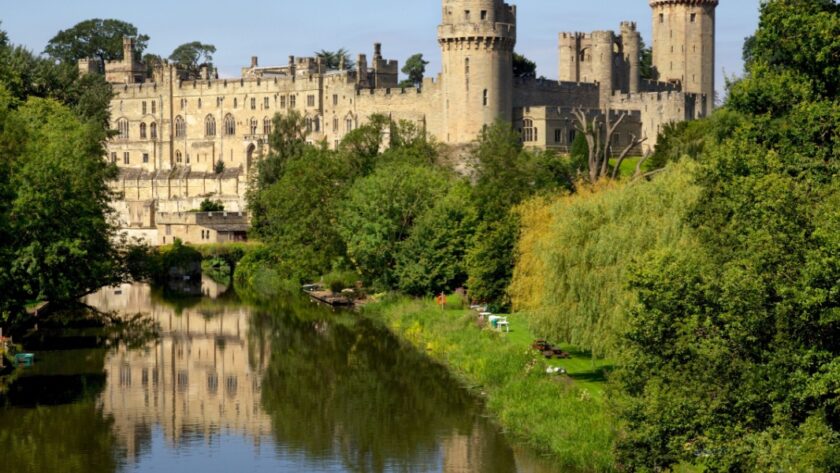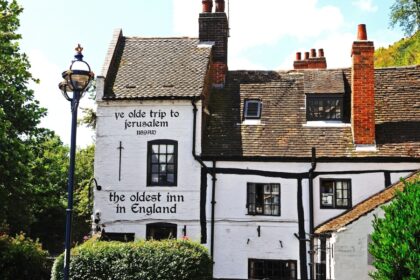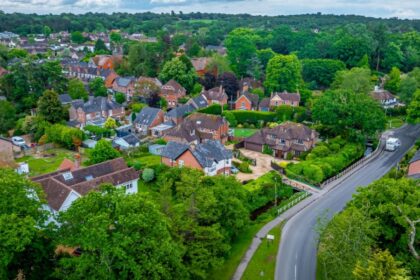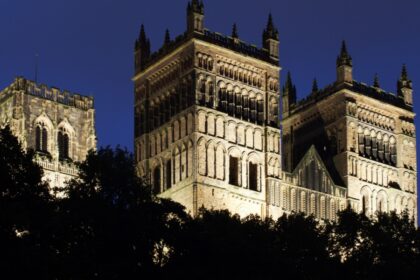Right in the middle of England, Warwickshire has somehow managed to fit in an impressive number of very English things: Shakespeare, castles, medieval towns, rolling countryside and just enough tea rooms to keep everyone well-supplied. It is not the biggest county, but it feels like a carefully edited version of England, where every postcard scene is conveniently close to the next one.
Warwickshire does not need to shout. It simply lays everything out in a pleasing, well-organised way and lets visitors quietly nod in approval.
Shakespeare, sonnets and very old houses
Stratford-upon-Avon is the county’s star attraction, and it wears its Shakespeare connections proudly. The playwright’s birthplace, his wife Anne Hathaway’s cottage, and even the site of his final resting place inside Holy Trinity Church are all preserved with great care.
The town itself is charming, with timber-framed buildings, riverside walks, and enough bookshops and theatres to satisfy the most dedicated literary pilgrim. The Royal Shakespeare Company puts on performances here year-round, occasionally convincing visitors that they understand 16th-century English better than they actually do.
Castles that mean business
Warwick Castle sits confidently beside the River Avon, looking very much like a castle should. Built by William the Conqueror’s lot and expanded over centuries, it remains one of the best-preserved medieval castles in England. These days it blends historical displays with falconry shows, jousting, and the occasional knight wandering around posing for photos.
Nearby Kenilworth Castle, though partially ruined, offers another impressive slice of history, particularly linked to Elizabeth I and her favourite, Robert Dudley, who tried very hard to impress the queen here — though ultimately without success.
Market towns, canals and a nicely paced countryside
Beyond its headline acts, Warwickshire offers a fine selection of market towns that carry on with quiet purpose. Royal Leamington Spa presents elegant Georgian terraces and landscaped gardens, while Warwick itself offers handsome streets, bookshops, and independent cafés that seem to have perfected the art of the mid-morning coffee break.
The county is crisscrossed by canals, once bustling with cargo boats and now more popular with narrowboats and towpath walkers who prefer their travel considerably slower.
Hills, hedgerows and England at its most gentle
The Warwickshire countryside rolls along in a gently undulating fashion. The fields are neatly divided by hedgerows that look as though they have been carefully trimmed for centuries, and the footpaths seem designed more for wandering than serious exertion.
Walking routes like the Centenary Way or Heart of England Way guide visitors through villages with names that sound straight out of a BBC period drama. You may find yourself sharing the path with the occasional horse, dog walker, or curious pheasant.
Slightly unsung history and a few surprises
Though Shakespeare tends to dominate the headlines, Warwickshire has a deeper history running quietly beneath it all. Roman roads still cross the county, and the Battle of Edgehill, the first major battle of the English Civil War, was fought on its soil.
Rugby, meanwhile, proudly claims its place in sporting history as the birthplace of rugby football, where the original school still stands and visitors can admire how one student picking up a ball changed the rules of an entire sport.
Where England quietly shows off its classics
Warwickshire does not offer anything too wild or unexpected. Instead, it simply gathers many of England’s best-loved ingredients – castles, poets, gardens, canals, and gently rolling fields – and arranges them into one very agreeable package. After a few days here, you may find yourself wishing that life everywhere was quite this well put together.





